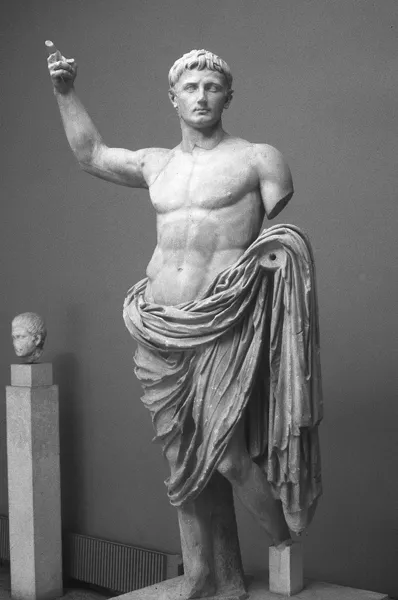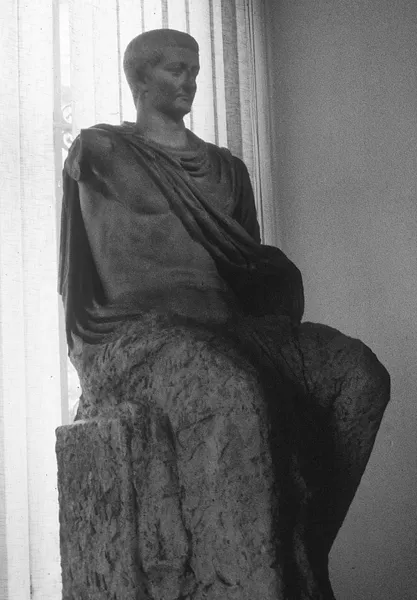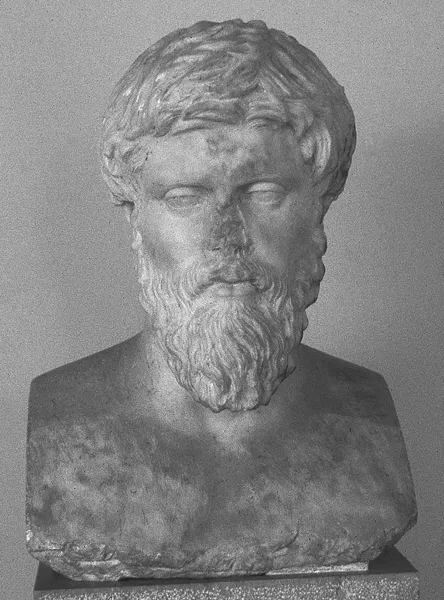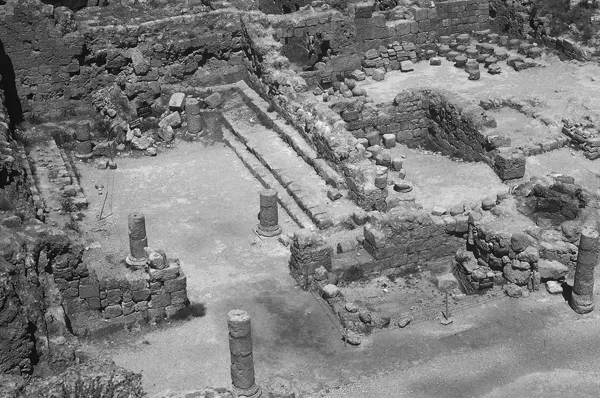1
The Setting for the Story’s Beginning
Three concentric circles of influence circumscribed the world in which early Christianity began. From the outside moving in, these influences were the Roman, the Greek, and the Jewish. The pattern of growth in the early church was the reverse, from the Jewish, to the Greek, to the Roman worlds. Unlike the mathematical image, however, these worlds were not sharply differentiated from each other, and the boundaries were quite porous.
“When the time had fully come, God sent his Son, born of a woman, born under law” (Galatians 4:4).
Nevertheless, the classification of influences is helpful in grasping the environment in which the early church began. Moreover, these influences remained formative for much of subsequent Christian history.
I. THE ROMAN WORLD
Luke sets the story of Jesus and the early church firmly within Roman history, noting Jesus’ birth under the emperor Augustus, his ministry under Tiberius, and mentioning the Roman governors and other officials with whom Jesus and later Paul had encounters (Luke 2:1–2; 3:1; Acts 13:7; 18:12; 24:27). Rome provided the larger governmental, military, and legal context of early Christianity.
At the birth of Jesus, Rome had recently completed the transition from the Republic to the imperial Principate under Augustus (27 BC–AD 14). Not long before that, the Roman general Pompey had conquered Palestine in 63 BC, and thereafter Rome ruled the Jewish homeland, alternating various administrative arrangements through which it exercised its will: legates based in Syria; client kings like Herod the Great, during whose rule Jesus was born; and governors like Pontius Pilate, under whom Jesus was crucified.
The organization of the empire seems to have provided a pattern for the eventual development of the church’s hierarchy, and procedures in the senate at Rome and at city councils influenced the conduct of church synods.
The army—the legions made up of Roman citizens and the auxiliaries composed of native peoples—was a constant presence on the frontiers and in provinces where disturbances were frequent. Among the peacetime duties of soldiers were the building of roads and securing safety of travel; Christian travelers, whether for business or religious purposes, used these roads and carried the Christian message with them.
Roman law is one of Rome’s enduring legacies to the Western world. When charges were brought against Christians, Roman magistrates and Roman law decided their cases. The imperial cult (the giving of divine honors to the emperor and his family), often allied with the local civic cults, provided an overarching religious cement to political unity and loyalty. The imperial court ceremonials, themselves borrowed from earlier eastern monarchs, continued under later Christian emperors.
Latin not only was the official language of government, but also became the common language in the western provinces; from the second century and after, Christianity in those regions expressed its message in Latin.
II. THE GREEK WORLD
Greek influences were predominant in language, education, literature, and philosophy at the beginning of Christianity. For the early disciples, the Greek language and culture were more significant than the Latin, and they remained so for the eastern Mediterranean area under the Byzantine empire (even though Latin remained its official language of government for centuries). Since the conquests of Alexander the Great in the fourth century BC, the Greek language, coinage, culture, philosophy, and religion had permeated the regions from Greece around the eastern coast of the Mediterranean to Libya. Education was based on Homer and the Greek classics.
The Greek cultural influences were felt in Rome and regions to the west, even among those who did not speak Greek. Greek was the language of the church in Rome, it seems, until the middle of the third century. Christian writers employed the Greek language exclusively, it appears, until the late second century, when some works in Latin and Syriac are known. Greek (and then Latin) rhetoric provided the standards for how letters were written, speeches constructed, and arguments conducted.
The great philosophical systems of Plato and Aristotle had been largely replaced in the Hellenistic age by philosophies more directed to practical and moral interests, principally Stoicism and Epicureanism, but interest in Aristotle and especially Plato revived in the early Christian centuries. As Christian theology developed from the affirmations of the gospel and the early moral and doctrinal instruction, Greek philosophy provided the vocabulary, ethical assumptions, thought world, and intellectual options with which Christian thinkers worked.
The traditional civic cults continued to be important centers of local pride, and traditional religious attitudes and practices continued to be nourished by the educational curriculum that centered on Homer. Initiations into mystery religions, visits to oracles and healing shrines, acceptance of fate, belief in astrology, and the practice of magic gained new strength during the first two centuries of the Christian era.
The social lives of people were guided by a combination of Roman legal and Greek societal norms. Thus in matters as varied as customs at dinner parties, at weddings, and at funerals, Christians lived within the framework of existing ways of doing things. Laws of marriage and of inheritance and established distinctions of social classes provided the framework for family life and social relations.
Pre-existing mentalities shaped religious attitudes. Funerary customs continued to be observed by Christians, although now within a new frame of reference. Many of the features of Greco-Roman religion became incorporated into Christianity as the gospel spread into the pagan population.
III. THE JEWISH WORLD
Jesus was born of Jewish parents, “the son of David, the son of Abraham” (Matthew 1:1), and all his first disciples were Jewish. Jesus was born in Bethlehem and grew up in Nazareth; most of his ministry was in Galilee, and he was crucified in Jerusalem—all places in modern Israel and the adjoining Palestinian territories.
This was a Jewish world that, like the rest of the Near East, had felt the influence of Hellenistic culture and, by the first century, an overlay of Roman rule. A large Jewish population remained in Mesopotamia from the time of the Babylonian captivity (sixth century BC), and many Jews lived in the western Diaspora where Greek (and farther west, Roman) cultural influences were even stronger than in the homeland.
After the conquests of Alexander the Great, Jews in Palestine had lived under the rule of the Ptolemies (Egypt) and then the Seleucids (Syria). A religious and nationalistic revolt initially led by Judas Maccabee successfully brought a century of independence under the Hasmonean dynasty (164–163 BC) that continued to inspire Jewish religious and political aspirations after the Jewish homeland came under Roman oversight.
Three unsuccessful revolts—in AD 66–73 put down by Vespasian and Titus, resulting in the destruction of the temple; in 115–17 in the Diaspora communities of northeast Africa and Cyprus; and in 132–35, the Bar Kokhba revolt, under Hadrian—ended Jewish prospects of an independent homeland until modern times. By the end of these revolts, the early Christian movement was well under way.
During Jesus’ ministry in Galilee his principal religious opposition came from the Pharisees over the interpretation of the Law of Moses applied to matters of daily life. At Jerusalem the opposition came from the Sadducees, the leading priests and ruling aristocrats who controlled the temple and matters related to it. The Dead Sea Scrolls have fueled speculation that possibly Jesus and, with more plausibility, John the Baptist had contact with the Essenes or a group like them at Qumran.
Early Christian preaching, as recorded in Acts, typically began in the Jewish synagogues of the Diaspora and drew a following from a small number of Jews and a larger number of Gentiles who were either affiliated with the Jewish community or attracted to it in varying degrees.
Judaism, therefore, provided the immediate religious context for Christianity. The Jewish Scriptures were the Bible of the early church, especially in their Greek translation, the Septuagint or Old Greek, a translation that had its beginning in the third century BC.
The God of the Jews was the God of the early Christians, and the central affirmations of the early church—Jesus as the Messiah, his resurrection from the dead, a new age of the forgiveness of sins, and the gift of the Holy Spirit—took their meaning from Jewish hopes, based on the interpretation of the scriptural Prophets and stimulated by the later apocalyptic literature of the Jews.
The story of early Christianity is the story of how a religious movement that began as a “sect” within Judaism successfully made the transition to the larger Greco-Roman world and eventually in the fourth century gained recognition as the religion of the Roman Empire.
Could anything be more improbable than that a religion following a man born of an unwed mother among a widely despised people in an out-of-the-way part of the world—a man then crucified by the ruling authorities on a charge of treason—should become the official religion of the Roman world, the formative influence on Western civilization, and a significant influence in other parts of the world?
That is the story to be told in the following pages.




